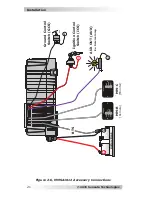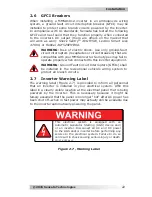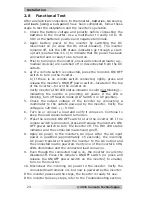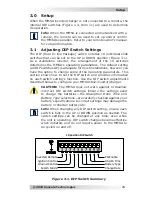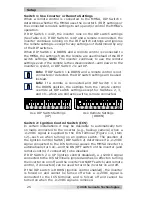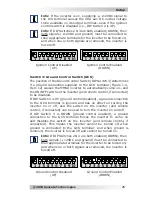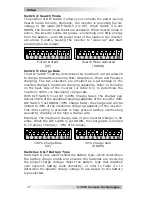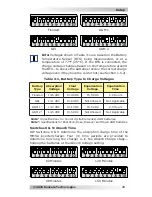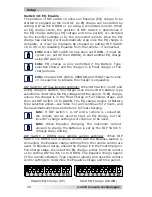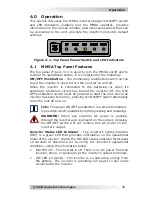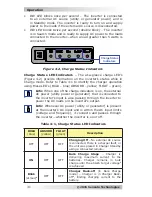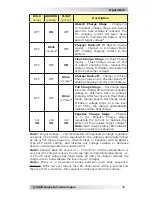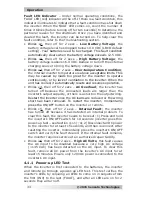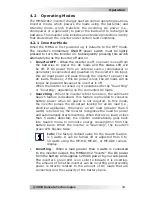
© 2015 Sensata Technologies
Operation
35
4.2.2 Standby Mode
The MMSA1012 features an automatic transfer relay and an internal
battery charger when operating in Standby mode. Standby mode
begins whenever AC power (shorepower or generator) is connected
to the inverter’s AC input. Once the AC voltage and frequency of the
incoming AC power is within the AC input limits, an automatic AC
transfer relay is activated. This transfer relay passes the incoming AC
power through the inverter to power the AC loads on the inverter’s
output. This incoming power is also used to activate a powerful
internal battery charger to keep the battery bank charged in case of
a power failure.
Battery Charging
–
The MMSA1012 model is equipped with an active
Power Factor Corrected (PFC) multi-stage battery charger. The PFC
feature is used to control the amount of power used to charge the
batteries in order to obtain a power factor as close as possible to 1
(or unity). This causes the battery charger to look like a resistor to
the line (forces the charge current waveshape to mirror the voltage
waveshape). This feature maximizes the real power available from
the AC power source (shorepower or generator), which translates
into less power wasted and a greater charging capability than most
chargers available today.
When an AC power source is connected to the MMSA, the inverter
monitors the AC input for acceptable voltage. Once the inverter has
accepted the AC input, the AC transfer relay will close and charging
will begin. Once charging, the DC voltage is monitored to determine
the charging stage. If the DC voltage is low (
≤
12.9 VDC), the charger
begins bulk charging. If the DC voltage is high (>12.9 VDC), the
charger skips the initial bulk/absorb charging stages and goes directly
to
fl
oat charging.
The multi-stage charger can use up to
fi
ve different charging stages
to help monitor and keep the batteries healthy.
The
fi
ve stages include
an automatic 4-stage charging process (Bulk, Absorb, Float, and Full
Charge), and a manual Equalization (EQ) charge stage.
The automatic
4-stage charge process provides complete recharging and monitoring
of the batteries without damage due to overcharging (see Figure
4-3). The Equalization stage
is used to stir up strati
fi
ed electrolyte
and reverse any battery plate sulfation that might have occurred
.
While charging, the unit may go into
Charger Back-off
protection,
which automatically reduces charge current to the batteries, because:
1. The internal temperature is too hot – the charger automatically
reduces the charge rate to maintain temperature.
2. The AC input voltage falls < 85 VAC – the charger reduces the
charge current to zero to help stabilize the incoming AC voltage.

